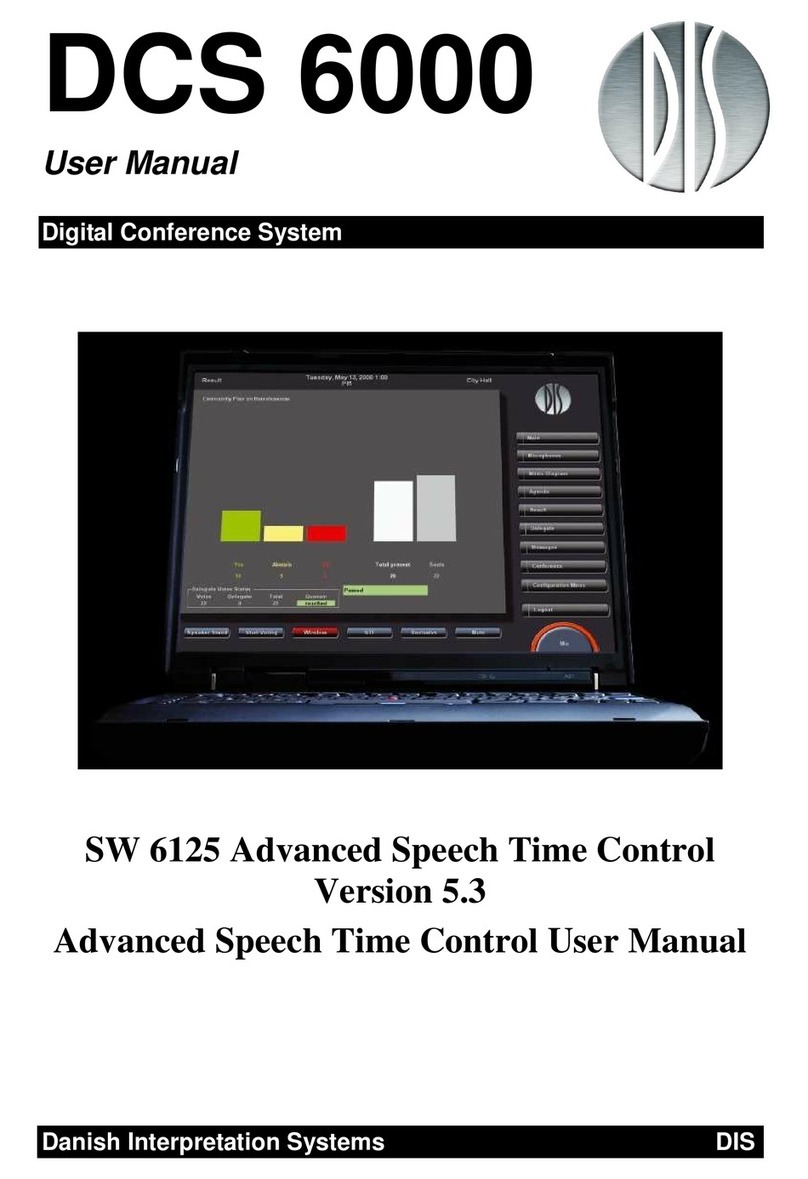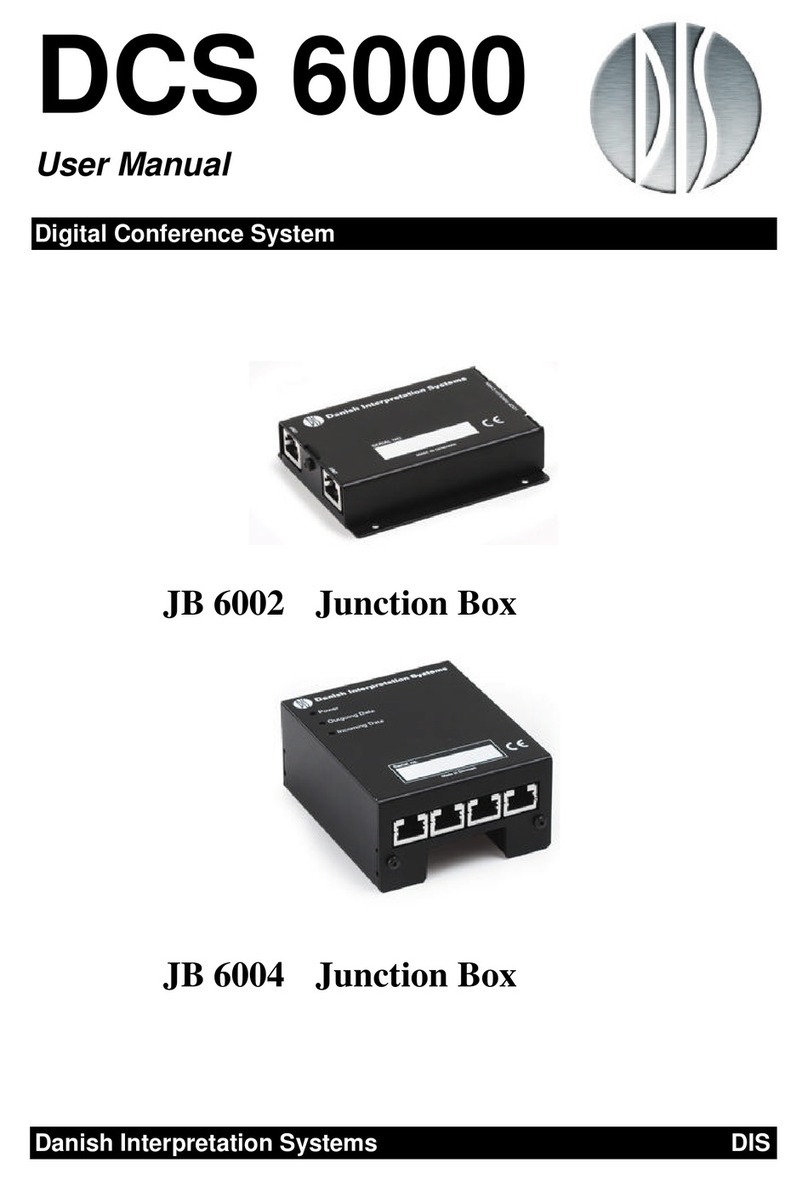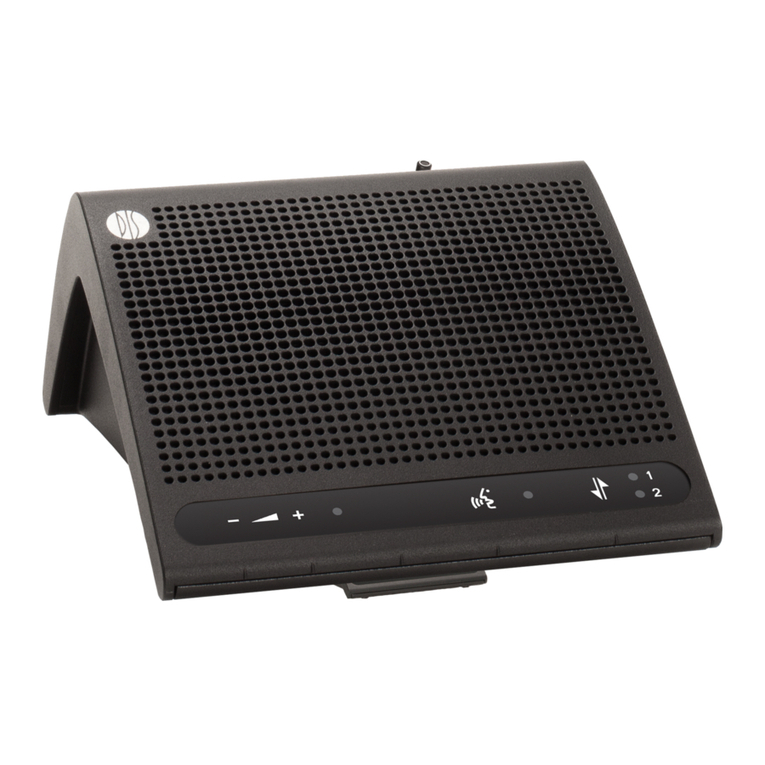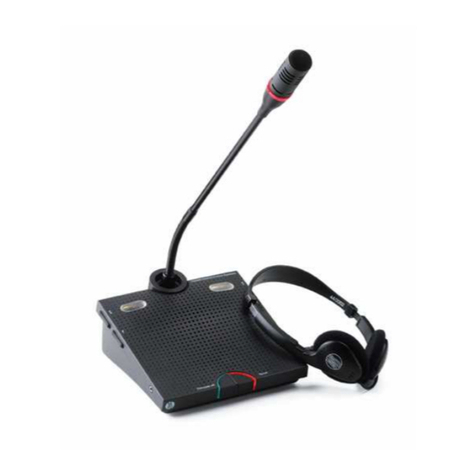Danish Interpretation Systems User Manual
Copyright © 2005 DIS DCS6000 DIGITAL IR SYSTEM REV B.DOC 03-05-2006
No part of this publication may be reproduced or utilised in any form or by any means without permission in writing from the
publisher.
1 List of Contents
1
List of Contents..................................................... 3
2
Important .............................................................. 5
2.1
Important Safeguards................................. 5
2.2
Installation precautions.............................. 5
2.3
Cleaning ....................................................... 5
2.4
Repacking .................................................... 5
2.5
Warranty...................................................... 5
3
System description and planning......................... 6
3.1
System overview.......................................... 6
3.1.1
Infra-red transmitter................................ 6
3.1.2
Infra-red radiators ................................... 6
3.1.3
Infra-red receivers................................... 6
3.2
System technology....................................... 6
3.2.1
IR radiation............................................. 6
3.2.2
Signal Processing.................................... 7
3.2.3
Quality modes......................................... 7
3.2.4
Carriers and channels.............................. 8
3.3
Aspects of infra-red distribution systems.. 9
3.3.1
Directional sensitivity of the receiver..... 9
3.3.2
The footprint of the radiator.................... 9
3.3.3
Ambient lighting................................... 10
3.3.4
Objects, surfaces and reflections........... 10
3.3.5
Positioning the radiators ....................... 11
3.3.6
Overlapping footprints and multipath
effects 12
3.4
Planning an DCS 6000 Digital infra-red
radiation system...................................................... 13
3.4.1
Rectangular footprints........................... 13
3.4.2
Planning radiators ................................. 14
3.4.3
Cabling.................................................. 14
3.5
Setting the radiator delay switches.......... 15
3.5.1
System with one transmitter.................. 15
3.5.2
System with two or more transmitters in
one room 17
3.5.3
System with more than 4 carriers and a
radiator under a balcony........................................19
3.6
Testing the coverage area..........................19
3.6.1
Testing during installation.....................19
3.6.2
Testing during a meeting.......................19
3.6.3
Testing all positions and directions .......19
3.6.4
Bad coverage.........................................19
3.6.5
Black spots ............................................19
3.6.6
Interference from IR systems ................20
4
DT 6008 & DT 6032 Transmitters.....................21
4.1
Description .................................................21
4.2
Installation..................................................22
4.3
Connections................................................22
4.3.1
Connecting the DCS 6000 Conference
System 22
4.3.2
Connecting other external audio sources
22
4.3.3
Connecting an emergency signal...........22
4.3.4
Connecting to another transmitter .........23
4.4
Using the configuration menu...................24
4.4.1
Overview...............................................24
4.4.2
Navigate through the menu ...................25
4.4.3
Examples...............................................26
4.5
Configuration and operation....................30
4.5.1
Start-up..................................................30
4.5.2
Main menu.............................................30
4.5.3
View transmitter status..........................30
4.5.4
View fault status....................................31
4.5.5
Set monitoring options ..........................32
4.5.6
View version information......................32








































